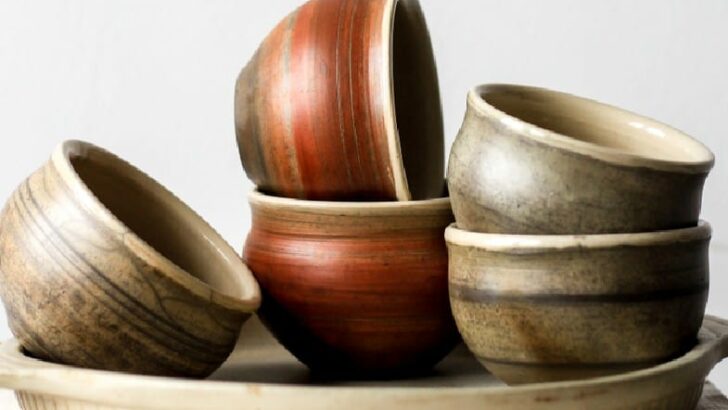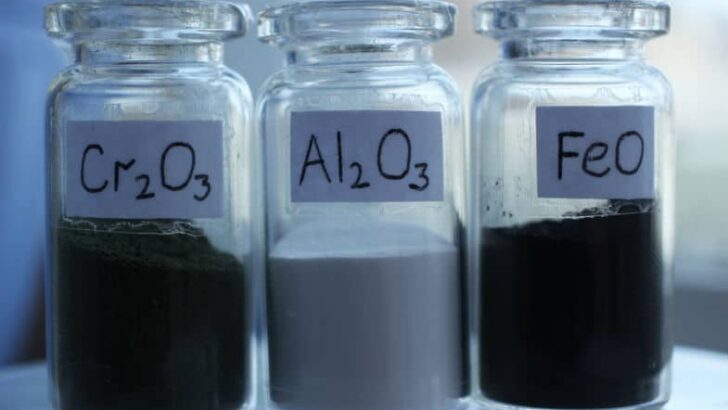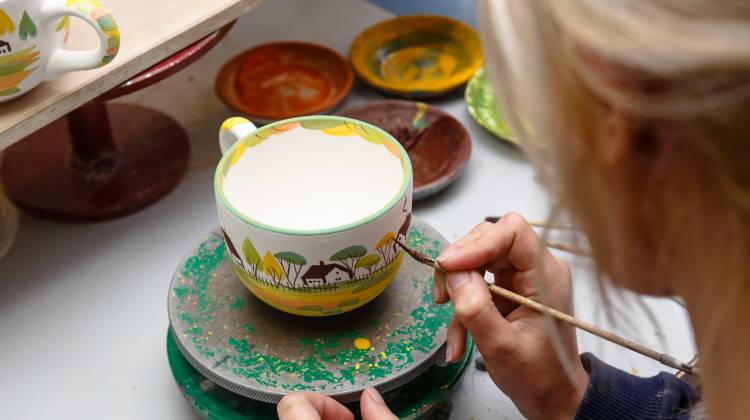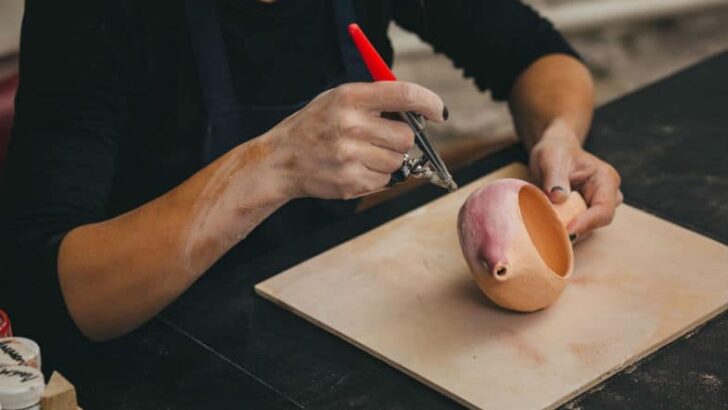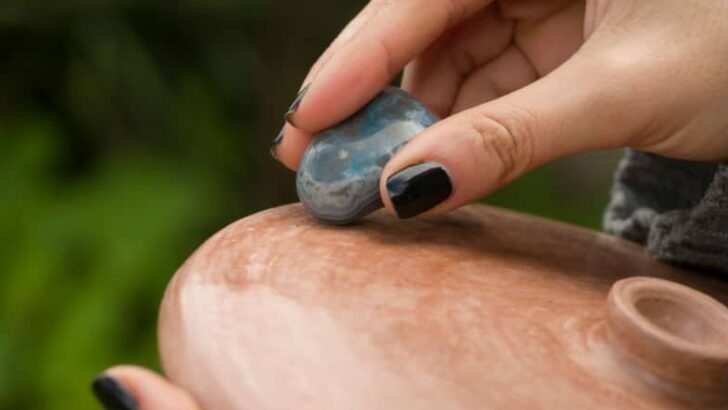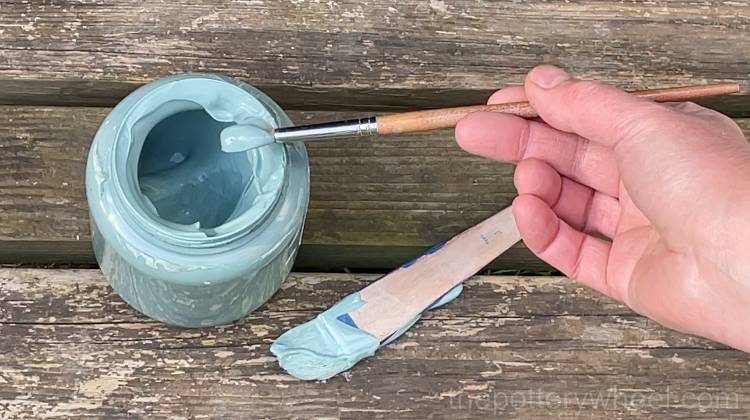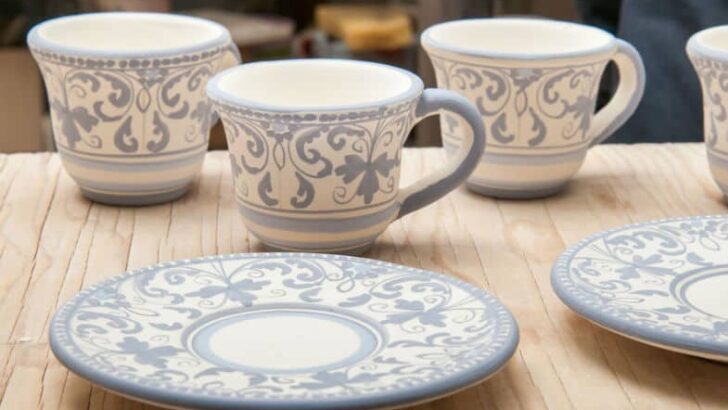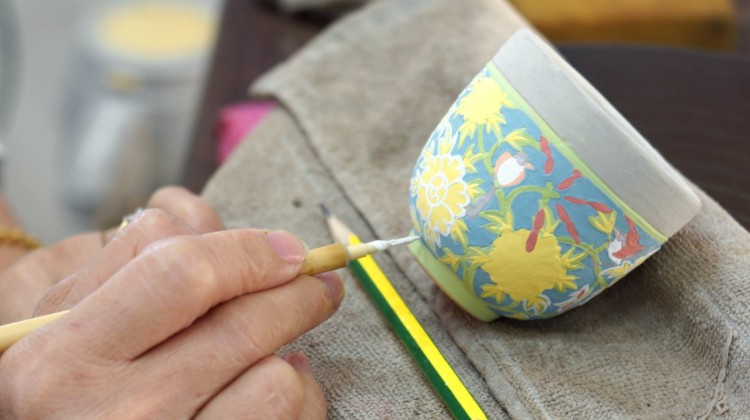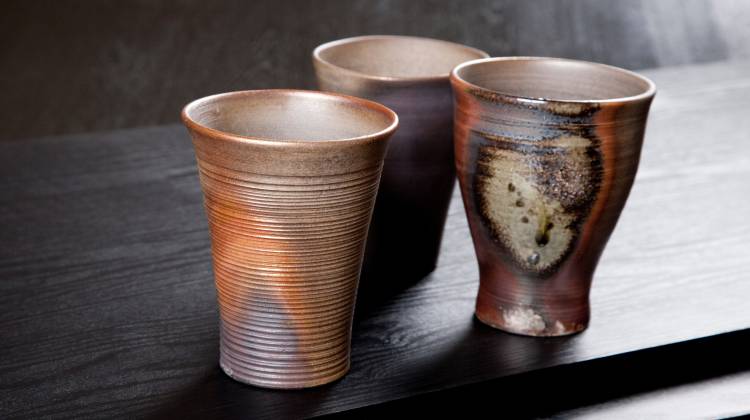Your cart is currently empty!
Decorating
-
How to Make Terra Sigillata | Easy Peasy Terra Sig
There are a lot of different accounts of how to make terra sigillata available. Some of these methods seem more precise than others. There also seems to be quite a bit of conflicting information. So, I did some research into the various recommendations made by different potters and cherry-picked the best suggestions. I tested these…
-
The Difference Between Oxides and Stains in Pottery
The terms “oxide” and “ceramic stains” are often used interchangeably. But are they the same thing? And if not, what is the difference between oxides and stains in pottery? Raw or plain oxides are metal elements that are combined with oxygen. They are ground to a powder and one of their uses in pottery is…
-
Can You Use Underglaze on Top of Glaze – Does it Work?
These days, underglaze is usually applied first and then a clear or semi-transparent glaze is applied on top. But what happens if you do the reverse? Can you put underglaze on top of glaze? Yes, you can put underglaze on top of glaze. However, it depends on what underglaze you use, and the combination of…
-
Airbrushing Underglaze onto Pottery – Top Techniques
Airbrushing underglaze is a great way to add sharp lines, shadows, shades, and color gradients to your pottery. On the surface, airbrushing seems like a simple process. You load the airbrush with underglaze and you spray, right? Well, not exactly. There are a few things that it’s helpful to know from the off. These will…
-
Burnishing Pottery With A Plastic Bag – Not That Strange!
Burnishing pottery involves rubbing it before it’s been fired so that the surface is smooth and shiny. There are lots of ways to burnish, and one of the easiest ways is burnishing pottery with a plastic bag. This might sound strange, but it does work. What is Burnishing Pottery? Burnishing clay is a way of…
-
What Is The Difference Between Slip and Underglaze?
Slip and underglaze are just two of the many ways you can decorate pottery. But, what is the difference between slip and underglaze? And which one should you use on your pottery? Slip and underglaze are both made of a mixture of clay and water. However, slip contains more clay and can add texture to…
-
Underglaze Smudging and Bleeding – How To Prevent It
Underglaze can be used for detailed and precise designs on your pottery. Usually, these designs will stay in place when they are fired. But sometimes underglaze can smudge, bleed, and run. What causes underglaze smudging and what can you do about it? There are three points at which underglaze can smudge or bleed. They are:…
-
Underglaze Techniques – 16 Exciting Ways to Use Underglaze
Underglaze is an incredibly versatile way of decorating clay. So, I thought I’d put together an overview of some of the best underglaze techniques for inspiration. Different Underglaze Techniques If you don’t have time to browse through all these underglaze ideas, you can use the links below to jump to the section that catches your…
-
What is Flashing in Ceramics – And How is it Done?
Flashing refers to changes in the color, pattern and texture of pottery. It occurs naturally during firing when clay comes into contact with flame, wood ash or soda vapors. However, it is now a sought-after decorative effect and can be achieved in modern kilns by using flashing slips.

